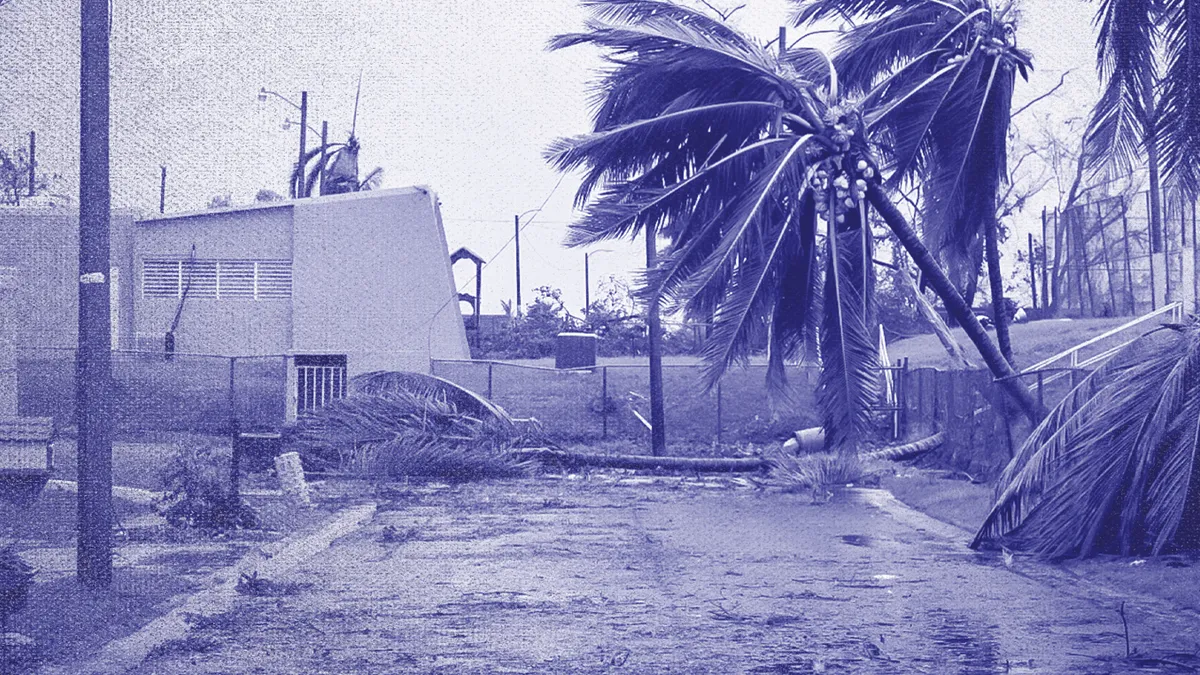This article is part of a series on natural disaster preparation and response. View all the articles here.
Dive Brief:
- Florida manufacturing is one of the sectors most at risk during hurricane season. The state supports industries from medical device manufacturers to engineering suppliers, all of which can face outages if they're hit by a storm, according to a DHL Resilience360 report "Stormy Weather Ahead: A Global Outlook on the 2019 Season."
- Disruptions to Miami International Airport or the Port of Miami "may cause ripple effects through not just national but also international supply lines," the report said. Ports in Texas, Alabama, South Carolina and Virginia can also experience disruption as a result of hurricanes.
- Outside of Florida, the petrochemical plants in Texas and the factories producing pharmaceutical goods and medical devices in Puerto Rico are also prone to hurricane impact. Hurricane Maria in 2017 led to issues in Puerto Rican medical device supply chains for months following landfall, according to the report.
Dive Insight:
This year's hurricane season, which began June 1 and lasts until Nov. 30, is expected to be a normal one according to forecasters. The National Oceanic and Atmospheric Administration (NOAA) predicted a 40% chance of a near-normal season, a 30% chance of an above-normal season and a 30% chance of a below-normal season. NOAA expects four to eight hurricanes this season, with two to four of those considered "major."
"Preparing ahead of a disaster is the responsibility of all levels of government, the private sector, and the public," Daniel Kaniewski, the deputy administrator for resilience at the Federal Emergency Management Agency, said in a statement. "It only takes one event to devastate a community so now is the time to prepare."
While hurricane season is officially underway, 95% of all major hurricanes form after Aug.1. Sept. 10 is considered the season's peak. Forecasts will usually be updated as peak season approaches to get a more accurate read, according to DHL.
Industrial manufacturing in Japan and China will also be subject to disruption from typhoons. Tropical Storm Risk predicted an above-average typhoon season for this year, the DHL report said. "Supply chains relying on ocean freight should also watch out for regular typhoon impact on major Asian container gateways which can cause weeks of congestion and delays," the DHL report reads.
In China, the electronics manufacturers in the Pearl River Delta and automotive manufactures in south of Shanghai are the most at risk, according to DHL. "Among ports most frequently disrupted by storms in East Asia are China’s east coast ports in Shanghai and Ningbo, as well as Japan’s ports of Kobe and Nagoya," the report reads.
The Series
-
How P&G created a 'ready for anything' supply chain
For the last decade, the CPG giant has been on a mission to use technology to take the guesswork out of disaster response.
-
In disaster response, health supply chain egos melt away
A speedy post-hurricane return to normal requires competitors to become collaborators to effectively manage inventory and cold chains.
-
Before disaster strikes, DHL has a 6-step plan
After managing the long tail of recovery from Hurricane Maria, DHL's director of operations for supply chain services in Puerto Rico knows the value of preparing for the worst.














